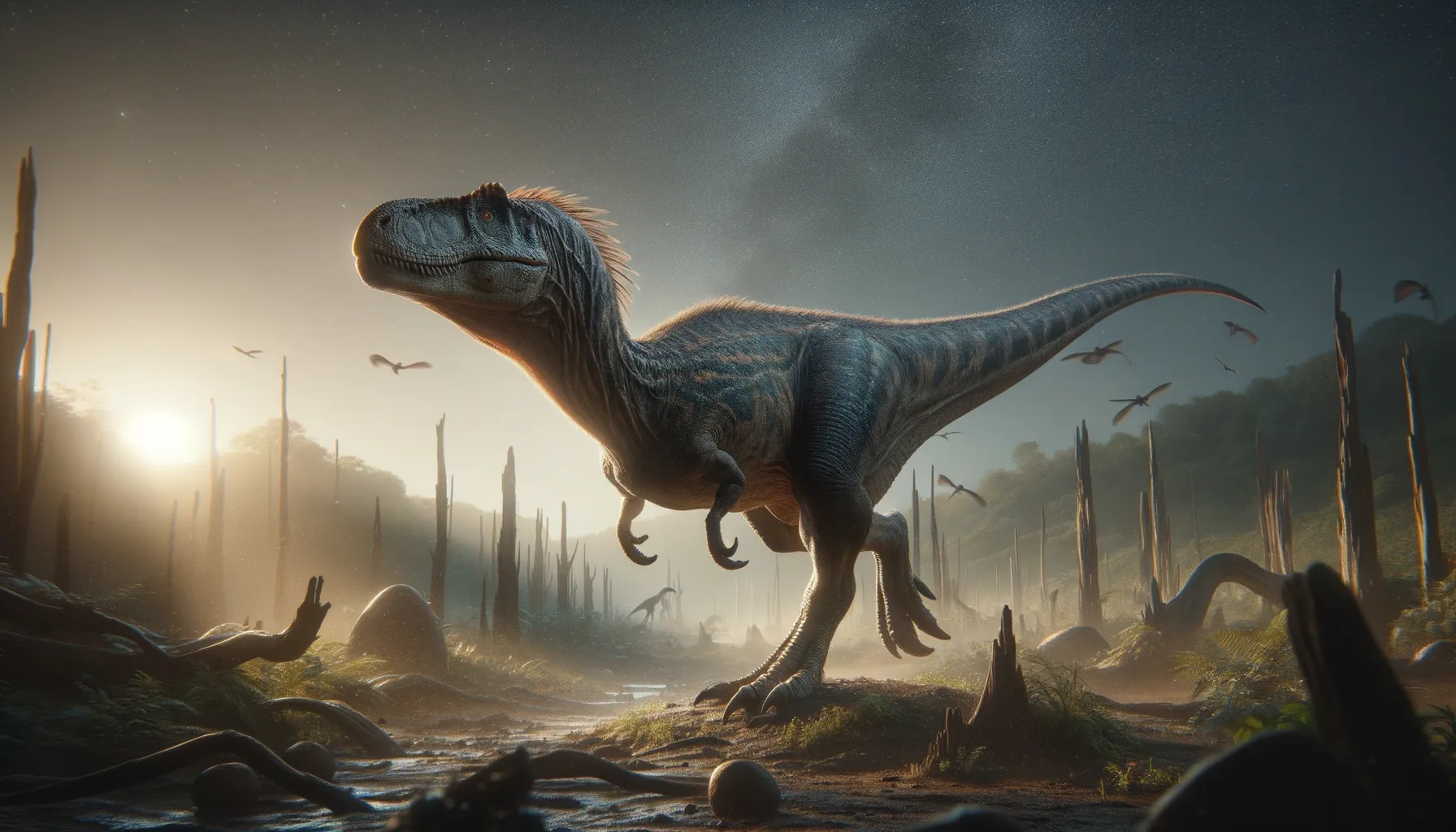
Aorun
Tiny predator, ancient ancestor of birds!
Period
Jurassic
Length
Close to 1 meter in length.
Height
Approximately 0.3 meters tall at the hip.
Weight
Roughly 1.5 kilograms.
Aorun is a small theropod dinosaur known from the Middle to Late Jurassic period. It was discovered in China and offers a glimpse into the early stages of theropod evolution, eventually leading to birds. Its well-preserved fossils have provided valuable insights into its anatomy and potential behavior. Despite its small size, it likely played a crucial role in its ecosystem by maintaining insect and small prey populations in check.
Diet
Aorun likely fed on small animals and insects, using its agility and sharp teeth to catch prey. Its diet might have consisted of invertebrates and possibly small reptiles and mammals, depending on availability.
Hunting
It likely used stealth and agility to capture prey, relying on quick movements to catch insects and small vertebrates. Aorun's hunting behavior mirrors that of small modern-day predators, adapting to various prey types.
Environmental challenges
Living during the Jurassic period, Aorun faced climate fluctuations and environmental changes typical of that era. Competition for food with other small theropods and larger predators posed significant survival challenges. It needed to constantly adapt to its environment to find food and avoid becoming prey for larger dinosaurs.
Speed
A small theropod with moderate agility.
Lifespan
Estimated lifespan similar to small birds.
First discovery
Discovered in 2006 in the Xinjiang region of China.
Fun Facts
- Aorun was a small theropod dinosaur that lived around 161 million years ago during the Late Jurassic period.
- The name Aorun is derived from a character in the Chinese epic 'Journey to the West'.
- Aorun was discovered in northwestern China in the Xinjiang region.
- The dinosaur is estimated to have been about 1.5 meters long, roughly the size of a large lizard.
- Aorun's diet likely consisted of small vertebrates and possibly insects, as suggested by its sharp teeth.
- Aorun's fossils were found near the bones of several other species, indicating it may have lived in a diverse ecosystem.
Growth and Development
Aorun may have experienced rapid growth in its juvenile stages, similar to modern birds. The fossil evidence suggests a pattern of quicker maturation, allowing it to be agile and independent at a relatively young age. This growth strategy might have helped it quickly adapt to the hazards of its environment.
Habitat
It likely inhabited forested areas with plenty of undergrowth, providing cover for its hunting style. The regions it lived in were rich in biodiversity, supporting a variety of small prey species. These habitats also provided shelter and nesting spots necessary for survival and reproduction.
Interaction with other species
Aorun coexisted with many other dinosaur species, both predators and herbivores, in its ecosystem. Its role as a small predator likely made it an important component of the food web, controlling insect and small vertebrate populations. Competition with other small theropods for resources was a daily challenge, fostering a competitive environment.
Natural lifespan
Its natural lifespan is estimated to be around 10 to 15 years.
Reproduction
Like many theropods, Aorun likely laid eggs, with nesting behavior possibly similar to that seen in modern birds. Parental care might have been minimal, relying on instinctual behavior for young Aorun to survive post-hatching.
Social behaviour
Aorun might have been solitary or formed small groups for hunting purposes. Social interactions could have included territorial displays or vocalizations to communicate threats or courtship intentions.
Fossil locations
Aorun fossils have primarily been found in the Shishugou Formation within the Junggar Basin of China. This well-preserved site provides crucial insights into mid-Jurassic theropod evolution. These fossil findings have contributed substantially to our understanding of small theropod diversification.
